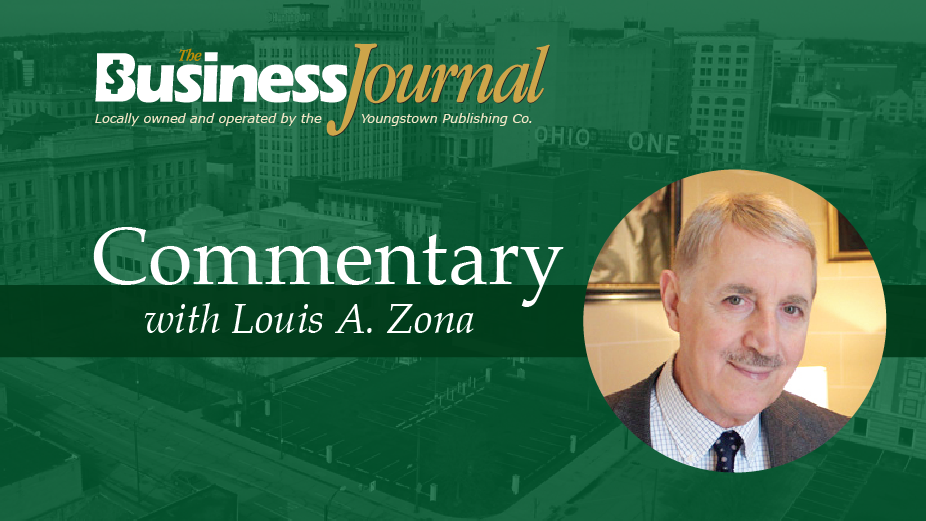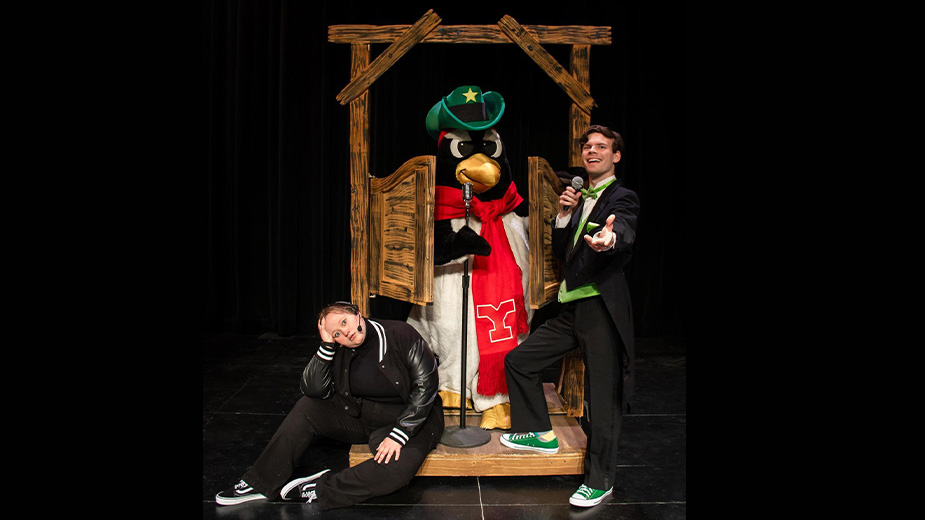Commentary: Center Street Revisited
By Louis A. Zona
YOUNGSTOWN, Ohio – I guess that I will never really get Center Street out of my heart and mind. That dead-end unpaved street in the industrial heart of New Castle, Pa., no longer exists.
In the collective memory of the few families who called it home, though, it was Beverly Hills. We loved every inch of its black, dusty soil and the sounds of the machines coming from the mills and plants that surrounded us.
This past Christmas Eve made me feel particularly nostalgic for Center Street. It wasn’t the best environment for Christmas celebrations because the movement of cranes and enormous rolling mill equipment clashed with “O, Holy Night” – even “Santa Claus Is Coming to Town.”
But hey, it was home, warts and all. In my mind, I can see my dad on the roof of our tiny house placing his homemade light candles near the chimney and along the perimeter of the roof.
Despite the distractions, the holidays on Center Street were unforgettable and beautiful in their own way.
Fortunately, the smells of industry avoided our house because, during those few days, Mom’s wonderful holiday meals were not to be challenged by the usual odors of pickling metal emanating from the nearby mills.
Getting my first elementary teaching job enabled me to buy two special gifts for Mom and Dad.
First, we needed a new front door for the house to replace one that did little to keep the cold out and the warmth in.
I found the perfect door at a local lumberyard. I wanted to give it to Mom and Dad on Christmas Eve, which was five days away.
The Marcella family who lived three doors away helped me to hide the door. They kept it in their kitchen until the holidays were over. I never forgot the kindness that was typical of the neighbors on Center Street.
The following year I got a new kitchen table and chairs that the nice people at Haney’s furniture delivered on Christmas Eve, just for me.
Living in the city provided benefits beyond the challenges of a dirt street, industrial noise and some pollution. My father never wanted to learn to drive and when asked about it always said, “What for?”
From where we lived, the downtown was five minutes away, as was the market as were the school and church. The Neshannock Creek was a stone’s throw away (literally) from a wooded area adjacent to the creek. A large cinder lot provided a place where baseballs could fly provided that Anthony, the strongest kid on the street, did not hit a ball through the windows of the Pennsylvania Engineering works.
And when he did, it was time to end the ball game and to outrun the plant security and sometimes even the city police. But we were kids who didn’t want to damage anything – other than to knock the occasional baseball through those windows.
On Center Street, everyone looked out for one another, although as time went on the original families slowly left the street for better housing in various parts of the city. And as the neighbors I grew up with departed and the houses emptied out, other families filled the void. But it wasn’t the same.
Gone were my neighborhood pals who made it possible to have fun: touch football, baseball on a cinder field, kick the wicket and many hours in Neshannock Creek.
The sad ending of Center Street occurred when the Redevelopment Authority decided to run a highway innerbelt that would move traffic out of the city and every structure on the street was removed.
I have tried to figure out the coordinates of the street but can find only its approximate location. I don’t have a Center Street obsession but I often reminisce about our tiny house on the one-way dirt covered street.
Perhaps the scariest moment of life on Center Street occurred when the youngest kid on the street, Dennis, contracted polio. Despite his heroic fight, he died.
Rumors arose that suggested ways to ward off the disease such as avoiding creek water, not inhaling street dust, getting overtired, etc. It seemed that we were doing everything wrong, at least according to the rumor mill.
I remember sitting on my front porch with several of my young buddies wondering which one of us would catch the disease next. Who was next in line?
Polio was a scourge destined to kill many young people – that is until a scientist named Jonas Salk, researching at my future alma mater, the University of Pittsburgh, found a cure and prevention. Relief is not the best way to describe our feelings at the moment that we heard of Dr. Salk’s discovery. America was in love with the man and justly so. He was a national hero.
I found it interesting that Salk eventually married Francoise Gilot, the former wife of Pablo Picasso. Wouldn’t you know that I would find a way to eventually move this topic to the world of art?
But hooray for science and scientists! And blessings to all who once called Center Street home.
Copyright 2024 The Business Journal, Youngstown, Ohio.



